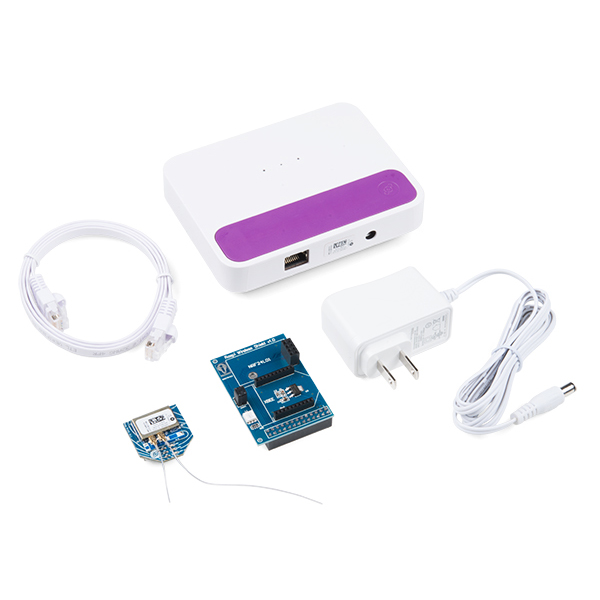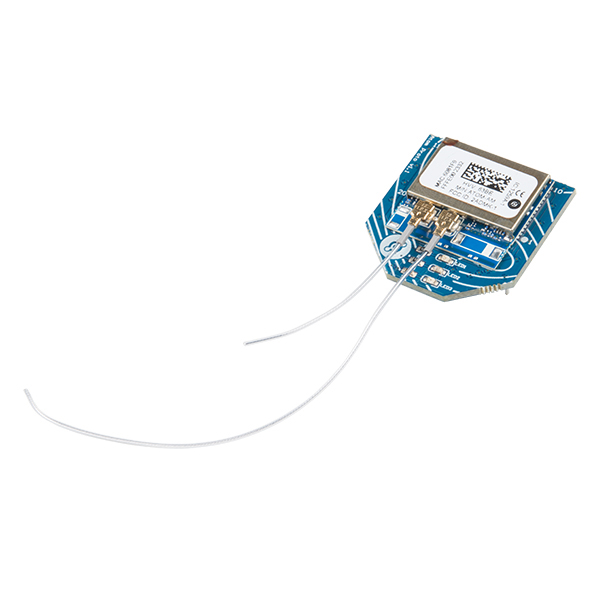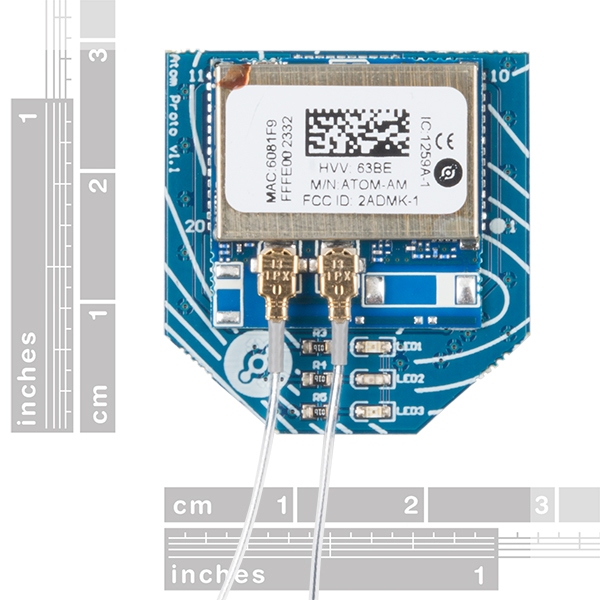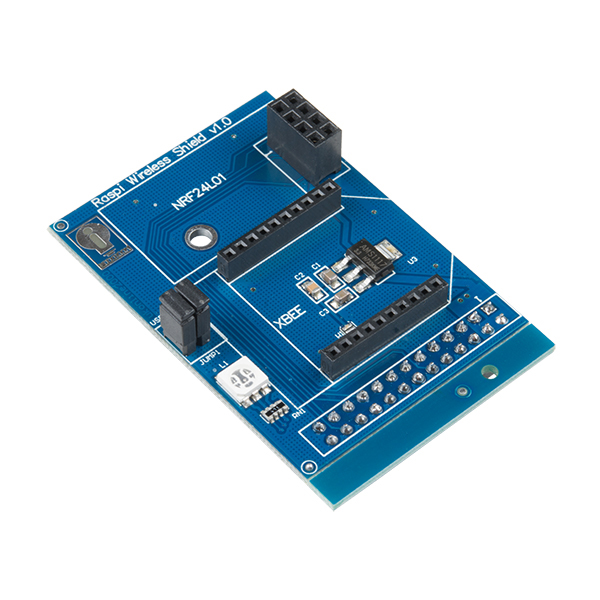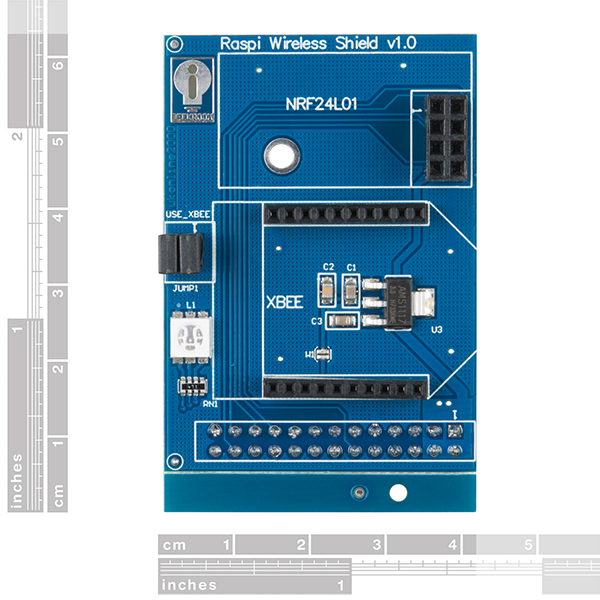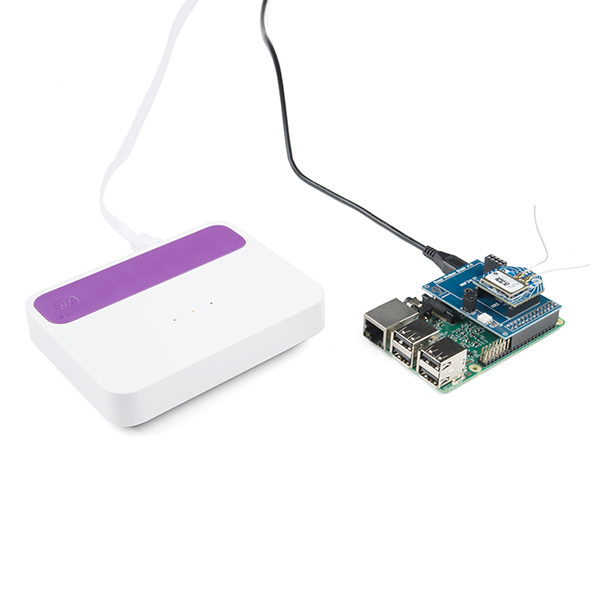Helium Ethernet Starter Kit (Raspberry Pi)
The Helium Ethernet Starter Kit for Raspberry Pi includes everything needed to easily give your embedded devices secure, long-range connectivity. This kit was built specifically for the universally loved Raspberry Pi development board to get it set up and ready for wireless and IoT applications!
Included in this version of the Helium Ethernet Starter Kit is an Atom to Raspberry Pi adapter, a HAT with a NRF24LO1 port, an Atom socket and an RGB status LED. You also receive a Helium Atom Prototyping Module and a Helium Element Access Point for Ethernet connectivity with an Ethernet cable and power adapter. The only thing you need to supply yourself is a Raspberry Pi development board and a way to power it!
Since Helium is a complete toolkit for building IoT applications that can connect to public clouds, a pre-built, secure connection from Atom modules interacts with what are called Helium Channels. Channels are a convenience layer between sensors and your organization’s cloud of choice that can connect to public clouds like Amazon Web Services, Azure, Google Cloud IoT Core or a private offering. Channels can also be used to send device data to applications and services via generic protocols like HTTP and MQTT.
The Helium Atom Prototyping Module is a low-power, dual-band wireless module perfect for developers. The pin layout is compatible with many existing embedded devices. Atom devices connect to the nearest Element Access Point using Helium's wireless technology, which allows those boards to communicate long distances with little interference and requiring no device-level configuration. Don't worry; each Element Access Point can support multiple Atoms.
- 1x Helium Raspberry Pi HAT
- 1x Helium Atom Prototyping Module
- 1x Helium Element Access Point (Ethernet)
- 1x CAT6 Ethernet Cable --- 3ft
- 1x Element Access Point Power Adapter
- Helium Atom:
- Networking Standards: IEEE 802.15.4
- Wireless Connectivity: 802.15.4 IEEE Standard on dual-band radios
- 915 MHz & 2.4GHz (U.S.)
- 868 MHz & 2.4GHz (E.U.)
- Security: Hardware-based encryption, authentication and authorization
- Operating Temperature: -40° to 185°F (-40° to 85°C)
- Certifications: FCC ID: 2ADMK-1 & IC ID: 12590A-1
- Voltage Range: 2.0V to 3.6V (3.3V typical; 2.4V recommended minimum for full TX power at 915MHz)
- Dimensions: 1.06" (27mm) x 1.1" (28mm)
- Element Access Point:
- Networking Standards: IEEE 802.15.4
- Typical operating range: 4500 square feet or several miles within line of sight
- Wireless Connectivity: 802.15.4 IEEE Standard on dual-band radios
- 915MHz & 2.4GHz (U.S.)
- 868MHz & 2.4GHz (E.U.)
- Security: Hardware-based encryption, authentication and authorization
- Power Options: Line powered with included AC adapter or power over Ethernet
- Operating Temperature: -40° to 185°F (-40° to 85°C)
- Dimensions: 4.7" (119.4mm) x 3.5" (88.9mm) x 1.1" (27.9mm)
Helium Ethernet Starter Kit (Raspberry Pi) Product Help and Resources
Core Skill: Programming
If a board needs code or communicates somehow, you're going to need to know how to program or interface with it. The programming skill is all about communication and code.
Skill Level: Competent - The toolchain for programming is a bit more complex and will examples may not be explicitly provided for you. You will be required to have a fundamental knowledge of programming and be required to provide your own code. You may need to modify existing libraries or code to work with your specific hardware. Sensor and hardware interfaces will be SPI or I2C.
See all skill levels
Core Skill: Electrical Prototyping
If it requires power, you need to know how much, what all the pins do, and how to hook it up. You may need to reference datasheets, schematics, and know the ins and outs of electronics.
Skill Level: Rookie - You may be required to know a bit more about the component, such as orientation, or how to hook it up, in addition to power requirements. You will need to understand polarized components.
See all skill levels
Comments
Looking for answers to technical questions?
We welcome your comments and suggestions below. However, if you are looking for solutions to technical questions please see our Technical Assistance page.
Customer Reviews
No reviews yet.

